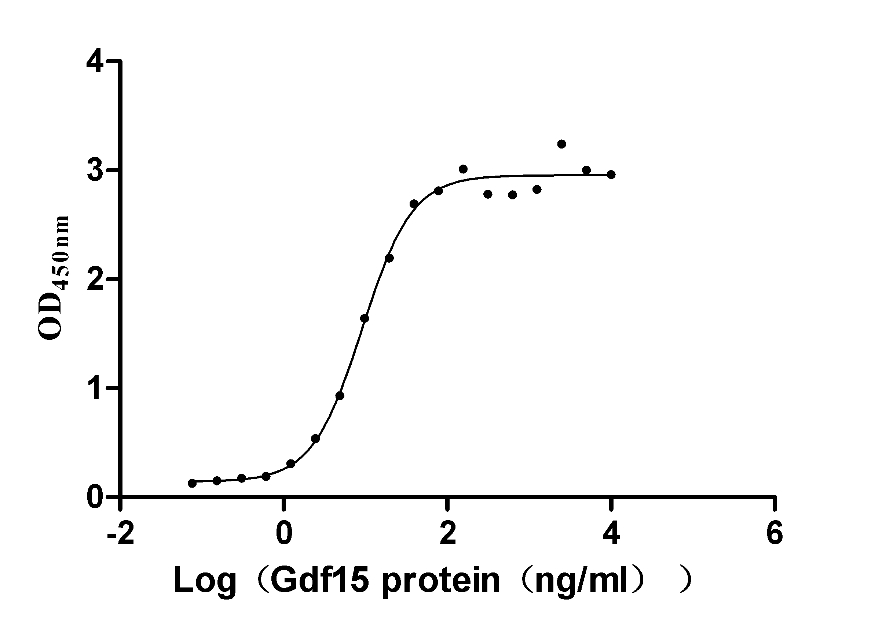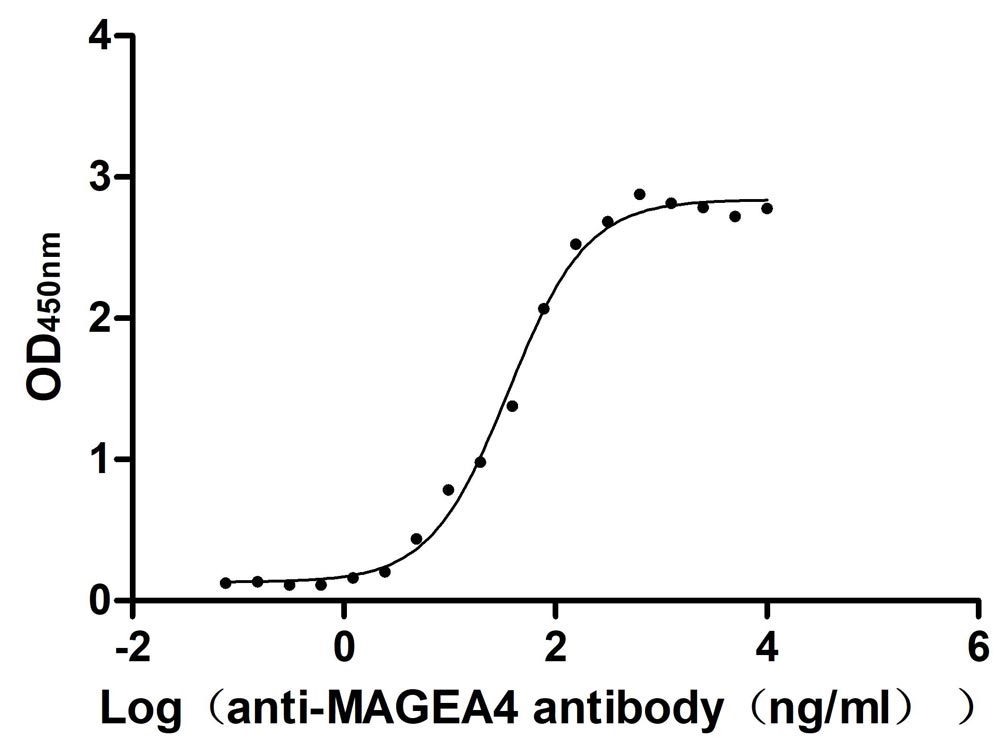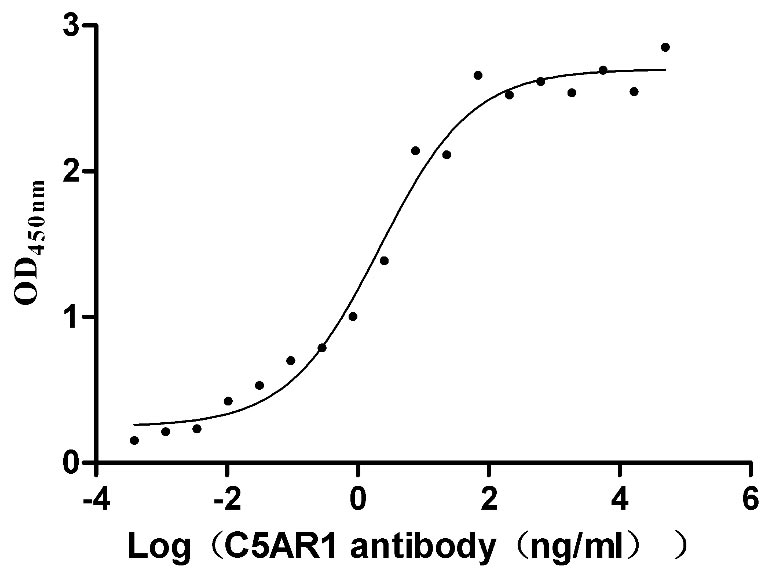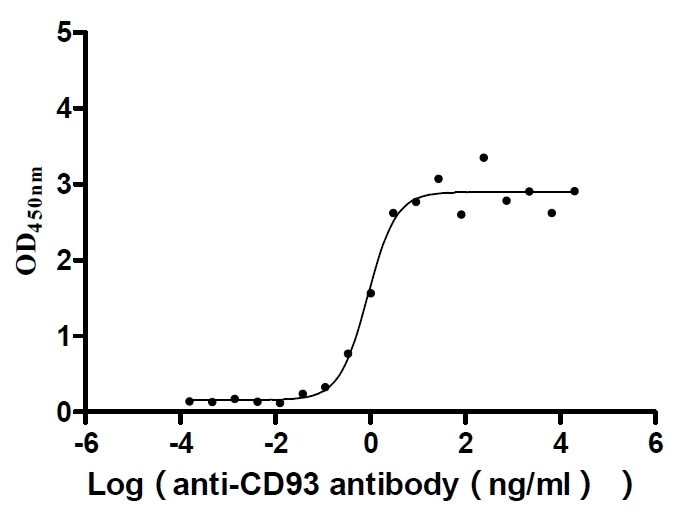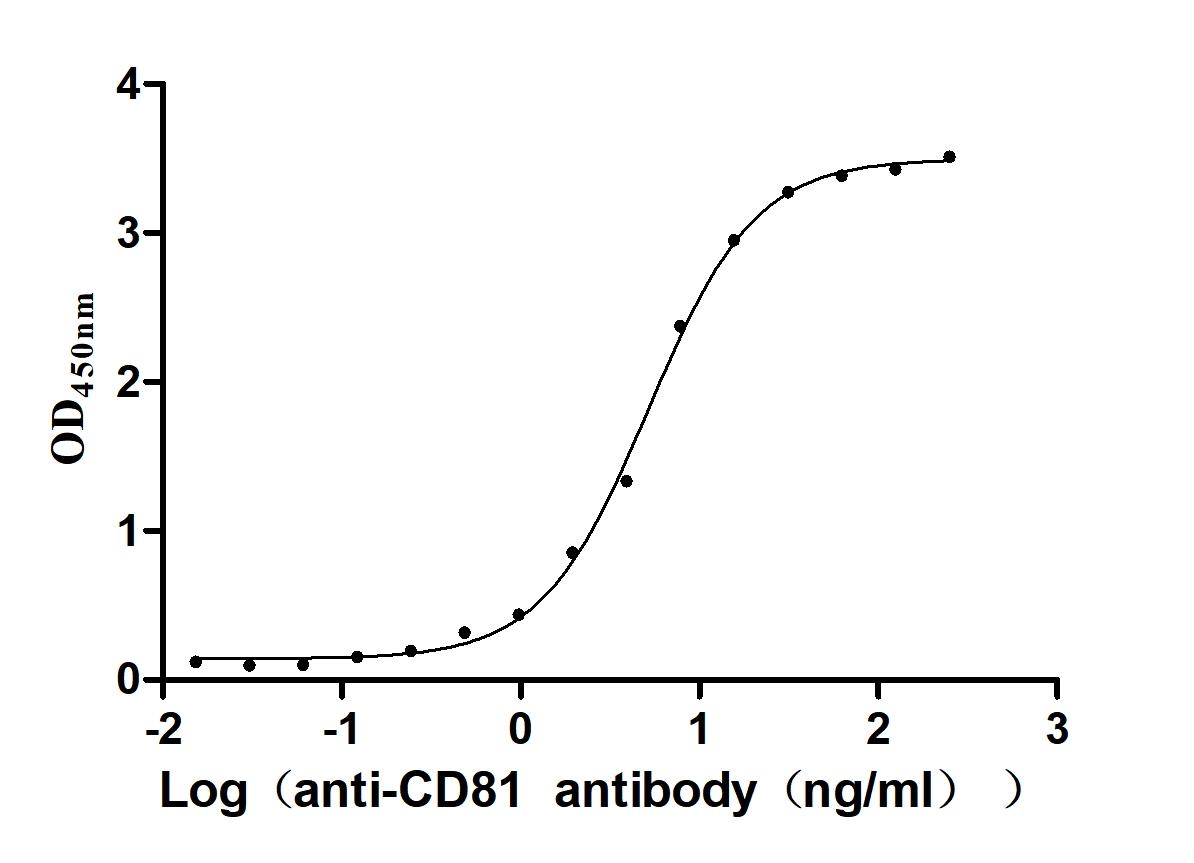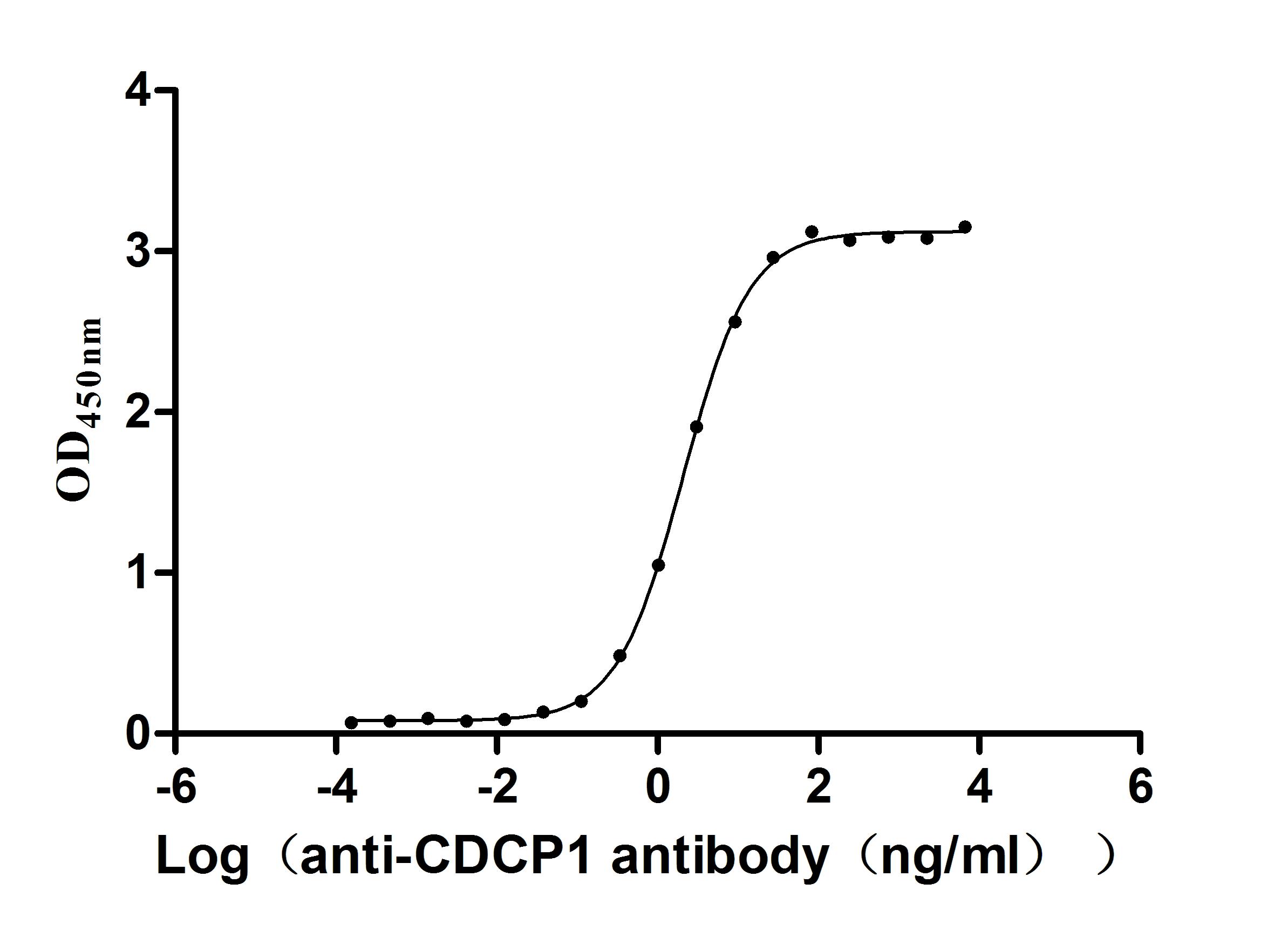Recombinant Mouse Activin receptor type-1 (Acvr1), partial
-
中文名稱:Recombinant Mouse Activin receptor type-1(Acvr1),partial
-
貨號(hào):CSB-YP001257MO1
-
規(guī)格:
-
來源:Yeast
-
其他:
-
中文名稱:Recombinant Mouse Activin receptor type-1(Acvr1),partial
-
貨號(hào):CSB-EP001257MO1
-
規(guī)格:
-
來源:E.coli
-
其他:
-
中文名稱:Recombinant Mouse Activin receptor type-1(Acvr1),partial
-
貨號(hào):CSB-EP001257MO1-B
-
規(guī)格:
-
來源:E.coli
-
共軛:Avi-tag Biotinylated
E. coli biotin ligase (BirA) is highly specific in covalently attaching biotin to the 15 amino acid AviTag peptide. This recombinant protein was biotinylated in vivo by AviTag-BirA technology, which method is BriA catalyzes amide linkage between the biotin and the specific lysine of the AviTag.
-
其他:
-
中文名稱:Recombinant Mouse Activin receptor type-1(Acvr1),partial
-
貨號(hào):CSB-BP001257MO1
-
規(guī)格:
-
來源:Baculovirus
-
其他:
-
中文名稱:Recombinant Mouse Activin receptor type-1(Acvr1),partial
-
貨號(hào):CSB-MP001257MO1
-
規(guī)格:
-
來源:Mammalian cell
-
其他:
產(chǎn)品詳情
-
純度:>85% (SDS-PAGE)
-
基因名:
-
Uniprot No.:
-
別名:Acvr1; Acvrlk2; Tgfb1; Activin receptor type-1; Activin receptor type I; ACTR-I; Serine/threonine-protein kinase receptor R1; SKR1; TGF-B superfamily receptor type I; TSR-I; TSK-7L
-
種屬:Mus musculus (Mouse)
-
蛋白長(zhǎng)度:Partial
-
蛋白標(biāo)簽:Tag?type?will?be?determined?during?the?manufacturing?process.
The tag type will be determined during production process. If you have specified tag type, please tell us and we will develop the specified tag preferentially. -
產(chǎn)品提供形式:Lyophilized powder
Note: We will preferentially ship the format that we have in stock, however, if you have any special requirement for the format, please remark your requirement when placing the order, we will prepare according to your demand. -
復(fù)溶:We recommend that this vial be briefly centrifuged prior to opening to bring the contents to the bottom. Please reconstitute protein in deionized sterile water to a concentration of 0.1-1.0 mg/mL.We recommend to add 5-50% of glycerol (final concentration) and aliquot for long-term storage at -20℃/-80℃. Our default final concentration of glycerol is 50%. Customers could use it as reference.
-
儲(chǔ)存條件:Store at -20°C/-80°C upon receipt, aliquoting is necessary for mutiple use. Avoid repeated freeze-thaw cycles.
-
保質(zhì)期:The shelf life is related to many factors, storage state, buffer ingredients, storage temperature and the stability of the protein itself.
Generally, the shelf life of liquid form is 6 months at -20°C/-80°C. The shelf life of lyophilized form is 12 months at -20°C/-80°C. -
貨期:Delivery time may differ from different purchasing way or location, please kindly consult your local distributors for specific delivery time.Note: All of our proteins are default shipped with normal blue ice packs, if you request to ship with dry ice, please communicate with us in advance and extra fees will be charged.
-
注意事項(xiàng):Repeated freezing and thawing is not recommended. Store working aliquots at 4°C for up to one week.
-
Datasheet :Please contact us to get it.
相關(guān)產(chǎn)品
靶點(diǎn)詳情
-
功能:Bone morphogenetic protein (BMP) type I receptor that is involved in a wide variety of biological processes, including bone, heart, cartilage, nervous, and reproductive system development and regulation. As a type I receptor, forms heterotetrameric receptor complexes with the type II receptors AMHR2, ACVR2A ors ACVR2B. Upon binding of ligands such as BMP7 or BMP9 to the heteromeric complexes, type II receptors transphosphorylate ACVR1 intracellular domain. In turn, ACVR1 kinase domain is activated and subsequently phosphorylates SMAD1/5/8 proteins that transduce the signal. In addition to its role in mediating BMP pathway-specific signaling, suppresses TGFbeta/activin pathway signaling by interfering with the binding of activin to its type II receptor. Besides canonical SMAD signaling, can activate non-canonical pathways such as p38 mitogen-activated protein kinases/MAPKs.
-
基因功能參考文獻(xiàn):
- Systemic activation of Activin A signaling causes chronic kidney disease-mineral bone disorder. (Review) PMID: 30142896
- findings demonstrate that hair follicle specific ALK2 is intricately involved in maintenance of the stem cell niche and wound healing PMID: 28513105
- targeted expression to fibro/adipogenic progenitors recapitulates the full spectrum of heterotopic ossification observed in fibrodysplasia ossificans progressiva patients PMID: 29396429
- NODAL/Activin signaling induces dramatic chromatin landscape changes, and a dynamic transcriptional network regulated by SMAD2, acting via multiple mechanisms. PMID: 28191871
- Acute tacrolimus treatment transiently increases hepcidin in wild-type mice. FKBP12 preferentially targets the BMP receptor ALK2. ALK2 mutants defective in binding FKBP12 increase hepcidin expression in a ligand-independent manner, through BMP-SMAD signaling. PMID: 28864813
- The authors demonstrated that ubiquitin-specific protease (USP) 4 strongly induces activin/BMP signaling by removing the inhibitory monoubiquitination from SMAD4. PMID: 28468752
- Enhanced SMAD-dependent BMP signaling through constitutively active ACVR1 in palatal epithelium causes submucous cleft palate in mice, via medial-edge-epithelium persistence presumably due to the up regulation of DeltaNp63 andresultingreductionofcaspase-3 activation. 2. PMID: 26116174
- BMP signaling mediated by coordination of ALK2/ACVR1, ALK3/BMPR1A, and BMPR2 is an essential proangiogenic cue for retinal vessels. PMID: 28232325
- This study showed that Gja1 may act downstream of cAMP-PKA signal to mediate the effects of Acvr1 on the differentiation of uterine stromal cells through targeting Hand2. PMID: 28219934
- Results showed activin-C and follistatin are differentially expressed during prostate development and suggested that the antagonistic property of follistatin is secondary to the action of activin-C. Study provides evidence to support a role of activin-C in prostate development and provides new insights in the spatiotemporal localization of activins and their antagonists during mouse prostate development. PMID: 28363632
- BMPR1B plays distinct roles from BMPR1A and ACVR1 in maintaining bone mass and transducing BMP signaling PMID: 27048979
- Suggest that BMP signaling upregulates the calcineurin/nuclear factor of activated T cell pathway via BMP type I receptor ALK2, contributing to cardiac hypertrophy and fibrosis. PMID: 26873969
- results suggest that ACVR1(R206H) causes FOP by gaining responsiveness to the normally antagonistic ligand activin A, demonstrating that this ligand is necessary and sufficient for driving HO in a genetically accurate model of FOP PMID: 26333933
- The findings suggest that the mutant ALK2 related to Fibrodysplasia ossificans progressiva is enhanced by bone morphogenetic protein type II receptors via the T203-regulated phosphorylation of ALK2. PMID: 25354296
- ACVR1 is required for chondrocyte proliferation and differentiation, particularly in craniofacial and axial elements, but exerts coordinated functions with both BMPR1A and BMPR1B throughout the developing endochondral skeleton PMID: 25413979
- expression of constitutively active ALK2 receptor results in significantly increased ASC osteogenic differentiation. PMID: 25232183
- SP-10 is a useful marker for staging the cycle of the seminiferous epithelium. The anti-SP-10 antibody works well in different fixatives, on paraffin-embedded as well as cryosections PMID: 25158006
- Data indicate that activin A receptor type 1 (Alk2) is a direct regulator of cartilage formation and mediates chondrogenic commitment of progenitor cells. PMID: 24449086
- Tmem176b mRNA levels were upregulated by stable transfection of ALK2 (R206H) in mouse myoblastic C2C12 cells. PMID: 24085390
- AcvR1-mediated BMP signaling in second heart field is required for arterial pole development: implications for myocardial differentiation and regional identity. PMID: 24680892
- Our work clarifies the conserved mechanisms through which BMPs regulate peri-implantation in rodents and primates and, for the first time, uncovers a linear pathway of BMP signaling through ALK2 to regulate CEBPB PMID: 24244176
- Glucocorticoids recruit Tgfbr3 and Smad1 to shift transforming growth factor-beta signaling from the Tgfbr1/Smad2/3 axis to the Acvrl1/Smad1 axis in lung fibroblasts. PMID: 24347165
- FGF2 inhibited BMP9-induced osteogenic differentiation by blocking BMP9-induced Smads signaling and subsequently reducing Smads dependent up-regulation of ALK1 and ALK2 in mesenchymal stem cells. PMID: 23680673
- GS domain ALK2 mutants act independently of upstream signaling but may require a nonenzymatic scaffolding function provided by type II receptors to form functional, apparently ligand-independent signaling complexes. PMID: 23572558
- Functional analysis of the 3'UTR region by Luciferase reporter assays showed that it plays an inhibitory role on ACVR1/Alk-2 gene expression. PMID: 23227223
- This unique knock-in mouse model provides novel insight into the genetic regulation of heterotopic ossification and establishes the first direct in vivo evidence that the R206H mutation in ACVR1 causes fibrodysplasia ossificans progressiva. PMID: 22508565
- Signaling via Alk2 is required for appropriate aortic valve development in utero, and that defects in this process lead to indirect secondary complications later in life. PMID: 22536403
- These results suggest that the Acvr1-deficiency can increase bone mass by activating Wnt signaling in which both Sost and Dkk1 expression levels are diminished. PMID: 21945937
- Alk3, is critically responsible for basal hepcidin expression, whereas 2 type I BMP receptors, Alk2 and Alk3, are required for regulation of hepcidin gene expression in response to iron and BMP signaling. PMID: 21841161
- Acvr1 conditional knockout (Acvr1(CKO)) mouse fiber cells had increased numbers of nuclei that stained for p53 phosphorylated on serine 15, an indicator of p53 stabilization and activation. PMID: 21504908
- Cell quiescence controlled by BMP signaling via ACVR1 is required for transient formation of nodal cilia. PMID: 21831921
- ACVR1 binds BMP2, 4, 6, and 7, through a heteromeric complex with BMPR2. PMID: 21297076
- Acvr1 is associated with acute lung injury PMID: 21297076
- Results strongly suggest that ALK1 and ALK2 may play an important role in mediating BMP9-induced osteogenic differentiation. PMID: 20628059
- The impact of ACVR1 R206H mutation on BMP signaling and its downstream signaling cascades in murine myogenic C2C12 cells and HEK 293 cells, was studied. PMID: 20463014
- signaling via Alk2 receptors is non-redundant and regulates normal development of a restricted set of structures derived from the cranial neural crest PMID: 15037318
- the type I BMP receptor ALK2 plays an essential cell-autonomous role in the development of the cardiac outflow tract and aortic arch derivatives PMID: 15226263
- endothelial-specific Alk2 mutant mice display defects in atrioventricular septa and valves, which result from a failure of endocardial cells to appropriately transdifferentiate into the mesenchyme in the AV canal PMID: 16140292
- Alk2 is crucial for sustaining the proper gastrulation events in early mouse embryogenesis, and is rendered functionall null by deletion of exon 7. PMID: 17117439
- BMPRs-Ib, -II, the activin receptor-1 (ActR-1) and the phosphorylated Smad1 were detected in DF and HERS at D6 and later more diffusely in the periodontium. BMPR-Ia detection was restricted to alveolar bone. PMID: 17662325
- ALK2(R206H) with Smad1 or Smad5 induced osteoblastic differentiation that could be inhibited by Smad7 or dorsomorphin. PMID: 18684712
- Data show that co-expressing constitutively active type I and type II receptors resulted in the phosphorylation of both R-Smad subclasses in a ligand-independent manner. PMID: 19335617
- key function of Smad-independent BMP receptor signaling may be reorganization of actin cytoskeleton to drive lens invagination PMID: 19733164
- Novel monoclonal antibodies revealed Acvr1 protein in notochord, in the facial sensory organ primordia, including lens, olfactory placodes and otic vesicle, in pituitary primordium, in mammary buds and in the epithelial layer of branchial arches. PMID: 10704880
顯示更多
收起更多
-
亞細(xì)胞定位:Membrane; Single-pass type I membrane protein.
-
蛋白家族:Protein kinase superfamily, TKL Ser/Thr protein kinase family, TGFB receptor subfamily
-
組織特異性:Highly expressed in bone during developmental stages. Expressed in normal parenchymal cells, endothelial cells, fibroblasts and tumor-derived epithelial cells.
-
數(shù)據(jù)庫鏈接:
Most popular with customers
-
Recombinant Mouse GDNF family receptor alpha-like (Gfral), partial (Active)
Express system: Mammalian cell
Species: Mus musculus (Mouse)
-
Recombinant Human Melanoma-associated antigen 4 (MAGEA4) (Active)
Express system: Mammalian cell
Species: Homo sapiens (Human)
-
Recombinant Human C5a anaphylatoxin chemotactic receptor 1 (C5AR1)-VLPs (Active)
Express system: Mammalian cell
Species: Homo sapiens (Human)
-
Recombinant Human Complement component C1q receptor (CD93), partial (Active)
Express system: Mammalian cell
Species: Homo sapiens (Human)
-
Recombinant Human CD81 antigen (CD81), partial (Active)
Express system: Mammalian cell
Species: Homo sapiens (Human)
-
Recombinant Macaca fascicularis CUB domain containing protein 1 (CDCP1), partial (Active)
Express system: Mammalian cell
Species: Macaca fascicularis (Crab-eating macaque) (Cynomolgus monkey)


